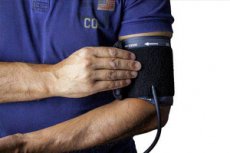New publications
Most people measure their blood pressure incorrectly
Last reviewed: 29.06.2025

All iLive content is medically reviewed or fact checked to ensure as much factual accuracy as possible.
We have strict sourcing guidelines and only link to reputable media sites, academic research institutions and, whenever possible, medically peer reviewed studies. Note that the numbers in parentheses ([1], [2], etc.) are clickable links to these studies.
If you feel that any of our content is inaccurate, out-of-date, or otherwise questionable, please select it and press Ctrl + Enter.

Experts explain: if the tonometer is equipped with a cuff that does not correspond to the size of the hand, it entails a distortion of the values obtained. The scientists voiced their comments during the meeting of the American Association of Cardiology in Chicago.
"How accurate the blood pressure measurements will be also depends on the nuances of the preparation for the procedure: the patient must choose the right posture and the cuff size must match the diameter of the forearm," explained the medical director of the Pediatric Hypertension Program, from Johns Hopkins University (Baltimore), Professor Temmy M. Brady.
Specialists point to the need to properly select a tonometer for more accurate measurement of blood pressure values. But the overwhelming number of scientific studies that have been conducted to assess the influence of cuff size on the accuracy of BP values have been limited to mercury devices, which are equipped with a manual air blower (pump), and pressure values are determined by listening to pulse tremors through a phonendoscope. Now scientists have conducted a new study in which they have examined the possible influence of cuff size on blood pressure values when measured by an automatic device.
Specialists measured the blood pressure of 165 adult volunteers - Americans aged about 55 years. Then they analyzed the figures obtained with a tonometer with a conventional cuff and a device equipped with a cuff adapted to the diameter of the forearm of a particular patient.
As a result, it was found that the use of a tight cuff resulted in an overestimation of blood pressure values in almost 40% of participants. At the same time, measurement with a too loose cuff distorted the values downward (more than 20% of cases). In people with large or very large forearm diameters, measurements with a normal cuff resulted in an overestimation of 5 to 20 mmHg. In patients with small forearm diameters, distortions were recorded within 3.8 (systolic pressure) and 1.5 mmHg (diastolic pressure).
Taking into account the findings, the experts concluded: when measuring blood pressure in adult patients, it is important to choose the right cuff size. And this is especially true for people with a larger forearm circumference. This rule is important to know not only for medical professionals, but also for patients themselves.
Other criteria for proper blood pressure measurement include:
- Do not eat too much, drink too much alcohol or smoke before the measurement;
- The forearm must be exposed (the cuff is not placed over clothing);
- The lower border of the cuff should be located 1.5-2 cm above the elbow flexion area;
- The patient should remain as calm as possible.
- It is better to repeat the measurements twice, keeping a break of 4-5 minutes.
The recommendations are published on the American Heart Association's page
